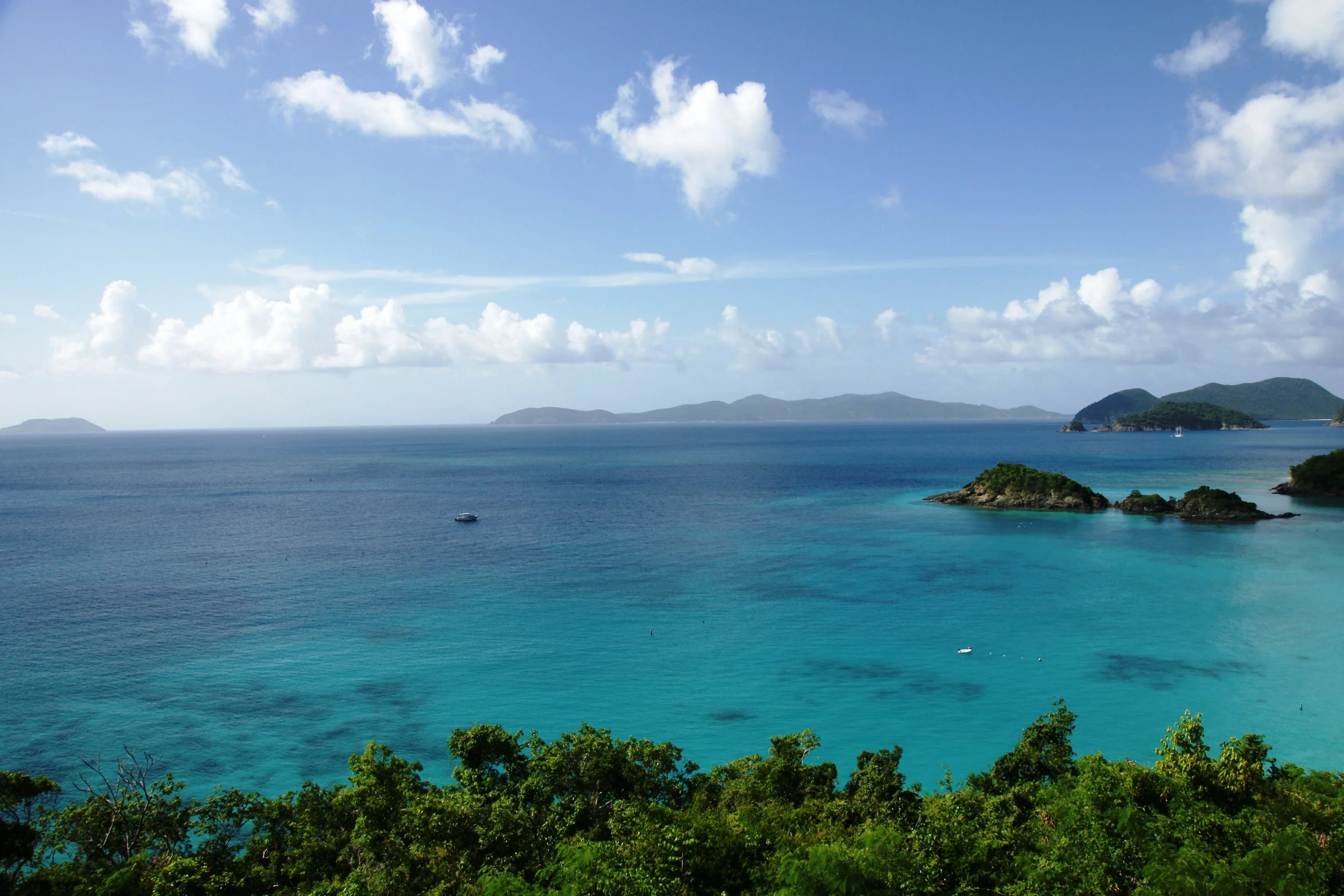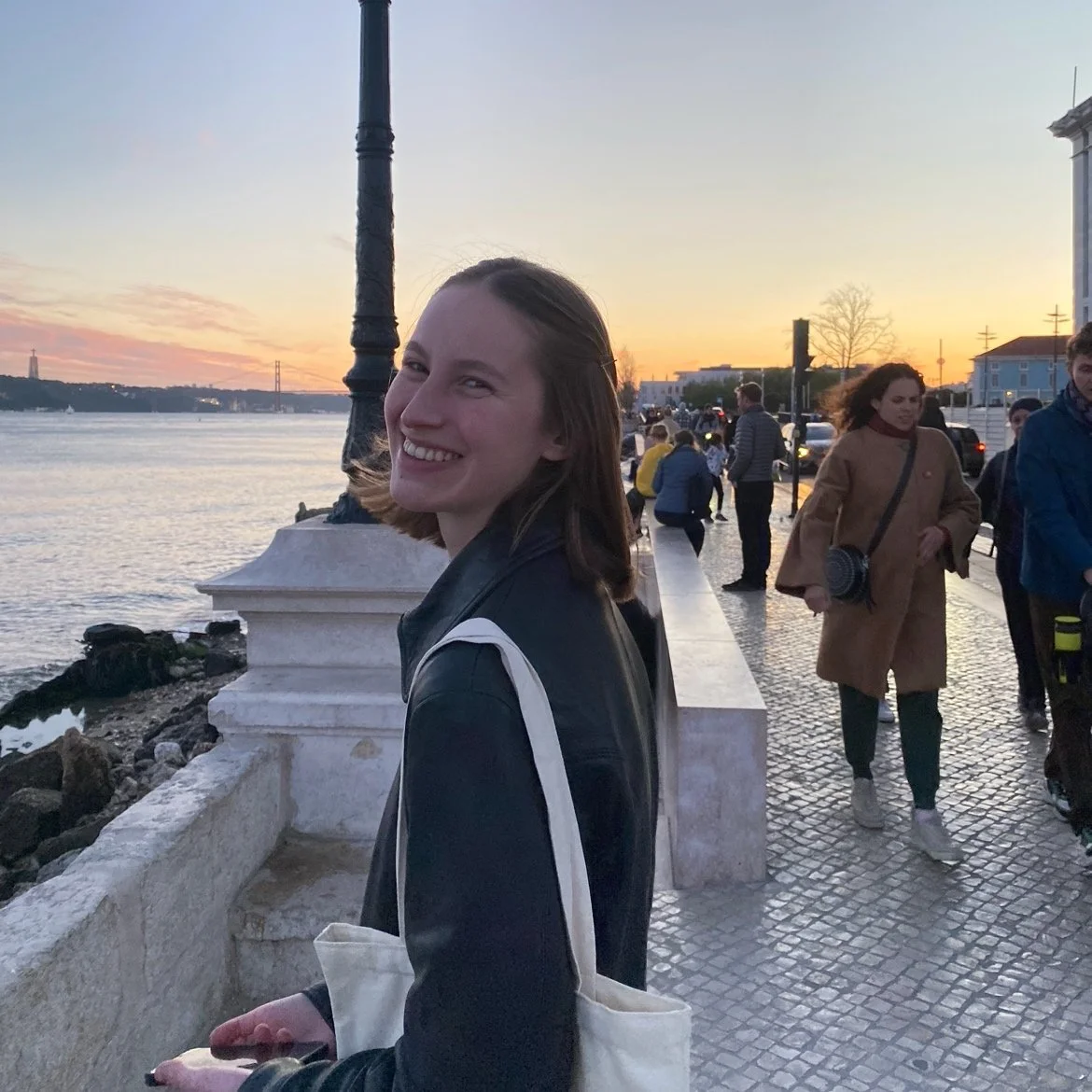The U.S. Virgin Islands offer a gateway into a world of rich marine life, lush vegetation, and a complicated global history.
Trunk Bay Overlook in St. John, U.S. Virgin Islands. Blake Carroll. CC0 1.0
Nestled in the northeastern area of the Caribbean Sea, some forty miles east of Puerto Rico, the U.S. Virgin Islands are characterized by their tropical beauty and rich coastal life. The U.S. territory consists of a bevy of small, minor islands and three large, more significant ones: St. Croix, St. John and St. Thomas, the latter of which hosts the capital, Charlotte Amalie.
Following a struggle over control of the islands between European powers, Denmark claimed St. Thomas in 1666 and St. John in 1684, and eventually St. Croix in 1733. Under Danish control the islands became a center for sugarcane production, and a major player in the African slave trade until slavery was abolished in 1848.
The United States purchased the Danish West Indies in 1917 for $25 million dollars, acquiring what are now the U.S. Virgin Islands. Tourism boomed after World War II to become the islands’’ primary economic activity, with nearly 3 million people visiting the islands every year.
St. Croix
Christiansted, St. Croix. Crystal Forest. CC BY 2.0
Known for its world class scuba diving and rum making, St. Croix offers opportunities for travelers to explore its environmental wonders and colonial history. One popular destination is the old town of Christiansted, which served as a mercantile center to support the island’s sugar-based economy in the 1700s. Travelers can explore the old Danish colonial architecture, including Fort Christiansted, which was built in the 18th century to ward off pirates. Alexander Hamilton spent his adolescence on St. Croix, and guided tours allow travelers to explore the island’s history while mapping out Hamilton’s early life. Popular sites on the tours include Christiansted Wharf, the international trade post where Hamilton arrived on the island as a child, and St. John’s Anglican Church, where Hamilton’s mother was buried.
Camping offers travelers a great opportunity to explore a new environment in a low-impact and environmentally conscious way. Mount Victory Camp on St. Croix is one such site working to create a sustainable option for travelers to enjoy St. Croix. The camp includes eco-lodges built from storm-felled tropical hardwoods and powered by renewable energy. Workshops are also on offer for visitors to learn more about the natural environment, with activities ranging from bow-making and wild food preparation to shelter building and naturalist studies.
On St. Croix, travelers can take advantage of activities offered through the St. Croix Environmental Association. The Association supports environmental advocacy, conservation and educational programs that help the public to learn more about the island’s natural resources. It also provides educational opportunities for kids, where they can engage directly with nature through snorkeling clinics, eco fairs, and forest field days.
The Buck Island Reef National Monument was established in 1961 and lies off the northern coast of St. Croix. The Monument covers some 30 square miles, including the entirety of Buck Island and surrounding barrier reefs. It is a popular snorkeling spot, and visitors can catch a glimpse of the rich marine life supported by the reefs, the likes of which include butterfly fish, barracuda, and reef sharks. Travelers can end their Buck Island adventure at Turtle Beach. The beach’s soft currents allow for easy swimming and, true to its name, an opportunity to glimpse sea turtles.
St. John
Virgin Islands National Park. Larry Syverson. CC BY-SA 2.0
Home to 20 square miles of protected national park land, the island of St. John is a paradise of tropical vegetation. Established in 1956, the Virgin Islands National Park covers approximately three-fifths of St. John’s mainland and includes waters surrounding the island, as well as parts of Hassel Island and the harbor of Charlotte Amalie on St. Thomas. The park, which was named a UNESCO World Network Biosphere Reserve in 1983, is home to some 800 different species of plants, ranging from cactus and agave to mangrove swamps and bay rum plants. In addition to its vegetation, the park also hosts more than 20 species of tropical birds as well as dozens of migrating species.
Off the coast of St. John, the Virgin Islands Coral Reef National Monument includes roughly 22 square miles of protected coral reefs and marine life. The monument, which was created in 2001, is a “no-take” zone, which effectively bans fishing in the area in an attempt to protect damaged reefs and overfished species.
With its extensive area of protected national parkland, St. John offers numerous camping sites for travelers. Along with those provided through the National Park, Maho Bay Camp is another popular site in which visitors can take advantage of eco-friendly lodgings. The camp began as 18 tent cottages in the heart of the National Park in 1976, and is now made up of 114 hand built tents. The lodgings are built on raised wooden pilings in order to prevent erosion of the forest floor and reduce runoff that can feed into and harm coral reefs. The camp provides visitors opportunities to further explore the island by offering activities such as sailing excursions, scuba diving, snorkeling and boat tours.
Maho Bay Beach is also one of the most popular places on the island for travelers to glimpse sea turtles. Sea turtles are a protected species, and it's important that travelers in no way touch or disturb the animals. Visitors can, however, marvel at the turtles underwater from a safe distance at Maho Bay Beach, with snorkeling gear rented by nearby stores such as Reef2Peek.
St. Thomas
Charlotte Amalie. Wayne Hsieh. CC BY-NC 2.0
First established as a Danish colony in 1672, St. Thomas serves as a gateway to the rest of the Virgin Islands and home to the territory’s capital city, Charlotte Amalie. Slavery was first introduced to St. Thomas in 1673, and Denmark’s use of the island to export sugarcane, along with its neutral status during the Napoleonic Wars, made it a prominent trading center and the largest slaving port in the Western Hemisphere.
The impacts of slavery in the Virgin Islands are still felt by local communities today. Emancipation Day is celebrated on July 3rd to commemorate the abolition of slavery on the island in 1848. The holiday is a moment of celebration, memorialization, and reflection on the islands’ history of slavery. On St. Thomas, Emancipation Day activities are hosted by The Pan African Support Group, which creates programs to generate education around the islands’ history while supporting their continuous social and political growth. The group is also working to create a genealogy project to help islanders trace back their familial roots and origins, dating all the way back to1838.
Walking tours in Charlotte Amalie give travelers the opportunity to learn about St. Thomas’ history. A self-guided tour includes sites such as Fort Chirstian, which was built by the Danish in 1680 to protect against invasion, and the Emancipation Gardens, which commemorate the 1848 emancipation of slaves by Governor Peter von Scholten.
Another popular spot for travelers are the 99 Steps. The staircase was built using bricks brought over from Denmark on sailing ships to make the island’s hilly terrain more accessible. Climbing the steps leads travelers to another important site on the island: Blackbeard’s Castle. Now a National Historic Landmark, the structure was originally built to provide a vantage point from which to spot enemy pirate ships. The castle is currently under renovation following damage from Hurricane Irma.
As one of the most developed and frequently visited of the Virgin islands, St. Thomas faces greater challenges of creating sustainable travel options.
One of the most popular ways to explore St. Thomas is through Virgin Islands EcoTours, which offer travelers opportunities to learn more about the island from professional naturalists through kayaking, snorkeling and hiking trips.
While exploring the Virgin Islands’ beaches and marine life, travelers should be aware of their choice of sunscreen and the effects it has on the environment. Sunscreens that contain oxybenzone, octinoxate and octocrylene can prove toxic to the oceans and are prohibited on the islands. Travelers should opt for non-nano mineral sunscreens containing zinc oxide and titanium dioxide, which have been deemed environmentally safe.
Making environmentally conscious food choices at restaurants can help lower human impact on St. Thomas’ environment. With local species such as Caribbean lobster and conch, as well as reef fish such as grouper, snapper and grunt under threat from overfishing, it is more sustainable for travelers to opt for open water alternatives such as dorado, wahoo and barracuda.
Every May, AgriFest offers an opportunity to learn about the island’s local food production and farming community. The agriculture and food fair uplifts local vendors while celebrating Caribbean culture and cooking traditions.
Jessica Blatt
Jessica Blatt graduated from Barnard College with a degree in English. Along with journalism, she is passionate about creative writing and storytelling that inspires readers to engage with the world around them. She hopes to share her love for travel and learning about new cultures through her work.





